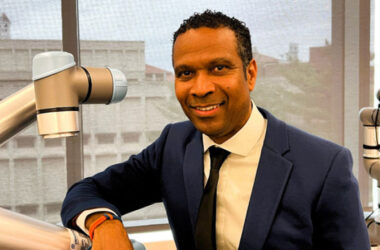
IT takes a lot to be a competitive company within the global marketplace. From focussing on customer values, to being innovative with new processes, services and products. It is hard work maintaining a competitive edge! To remain ahead of the competition, supervisors must be attentive to all aspects involved in making the company a success; continuously assessing how each facet functions.
An element that continuously needs to be assessed is that of the company’s staff. The presence of a variable, competent and capable staff can at times make or break an institution. Many a time, it is the way in which staff carry out their day to day tasks and implement innovative ideas that guarantees success. However, not all staff members are the same. Individuals often have their own work style and it is an amicable mix of these work styles that often gives a business its distinct competitive edge.
Within her article ‘Your Team May Have Too Many Prioritizers and Planners’ in the Harvard Business Review, author Carson Tate lists the four types of workers needed in a successful company. They are planners, prioritizers, arrangers and visualizers. Planners and prioritizers can be described as individuals who are analytical, linear and data and detail orientated. They pride themselves on their ability to be undoubtedly organized, precise and committed to honouring deadlines. Whilst arrangers and visualizers are supportive, expressive, and emotionally intelligent big-picture thinkers. They generate ideas and take risks.
In a recent assessment conducted by the Harvard Business Review over 46,000 people were evaluated to identify their personal productivity style. Specific questions were asked to help people to self-analyse and recognise how they think, learn and communicate best. On evaluating the results certain trends were found. Forty-seven percent (47%) of participants were recognised as Prioritizers, whilst thirty-seven percent (37%) illustrated the traits of Planners. These work styles align with the expectations and key drivers of performance in many of today’s leaner, more streamlined organisations, therefore they are a necessity. Easily recognisable for their abilities, prioritizers and planners are usually the most likely to get promoted.
Only 19% of those assessed turned out to be Arrangers, whilst 18% demonstrated Visualizer tendencies. However, companies need people of all types. Due to this, Arrangers and Visualizers also have their importance. Think about it, if companies are unable to connect with their customers offering break through products and services, no amount of prioritizing and planning will ensure the long term viability of the company.
Managers and supervisors, as leaders, need to know and understand their own work style and those of their employees ensuring a balance of thinking and approaches. Realistically, most organisations probably won’t have a team in which Prioritizers, Planners, Arrangers, and Visualizers are all equally represented. However, new people or outside experts can be brought in to bridge the gaps. In preparation for this it is important to find out what work styles the workers in the workplace presently exhibit. By giving each person a new project to work on, their work style can be determined. On receiving information about the new task each staff member will have questions of their own pertaining to it. The questions asked will give some indication as to what category they fall under.
Faced with a new project, for example, Prioritizers would ask:
• What is the goal?
• What is the deadline?
• What data or facts are necessary?
• What metrics will be used to evaluate success?
Planners would ask:
• How will the project be delivered?
• How will the project be completed? Is a project plan necessary?
• How will information about the project be communicated?
Arrangers would ask:
• Who are the project stakeholders?
• Who else needs to be involved?
• Who can support you in achieving the goals of the project?
Visualizers would ask:
• What are the gaps between where you are today and where you want to be at the end of the project?
• Why does this project matter to the team and the organization?
• What barriers can you foresee that will need to be addressed as you implement this project?
If you’re leading a team that is heavily weighted toward one or two work styles, recognize the value in rebalancing it. Work style diversity is the making of a productive team that will focus on all aspects – the big picture and the details, ideas and execution and purpose and profits.
(For more information on productivity and other related matters, contact the National Competitiveness and Productivity Council on Second (2nd) floor, Financial Centre Building, Bridge Street, Castries. We can also be contacted at 468 -5571/5576/5552 or visit the Council’s Facebook page at https://www.facebook.com/stluciancpc or email at [email protected])














